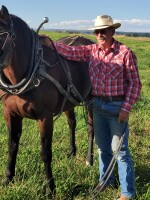The Trump era trade war with China and the European Union hit the U.S. agricultural economy pretty hard during 2018 and 2019, with corn and soybean prices dropping below the cost of production. To prop up falling political support from farmers, the U.S. Department of Agriculture was tasked with designing a program to compensate farmers for low crop prices. The USDA’s came up with the Market Facilitation Program, which paid out over $23 billion in direct payments to farmers in 2020. But according to the Government Accounting Office, USDA failed to make sure that the money was going to the farmers who needed it. The Office determined that over the course of the Program, $800 million went to farm owners who didn’t qualify for this aid and less than 4% of the funds went to historically underserved farmers, including low-income, racial minority, veterans, and beginning farmers.
An article in the November issue of Progressive Farmer magazine caught my attention recently. It pointed out that sometime this month, the world's population will exceed 8 billion people, 56% of whom live in cities. Although the United Nations estimates that 10% the world population is undernourished, that number is probably the most available food distribution in history. In the U.S., over 80% of the population now lives in urban areas, and about 2.6 million people operate around 2 million farms. That’s a large decline from nearly 7 million farms in 1935, which indicates a huge increase in productivity in the last eight plus decades. The challenge for farmers and ranchers in the future will be to produce food and fiber for a growing population while facing a changing climate and fewer resources.
Cattle are often held up as demons when it come to climate change with all of their methane belching and farting, but an Oregon State University and U.S. Department of Agriculture Research Service study found that they can be helpful in suppressing wildfires have become an increasing and expensive problem on federal sagebrush landscapes that cover much of the interior lands in the western U.S. The study placed collars on cows which communicated thru GPS to reception towers that sent signals to the collars that created the virtual fences. The collars work by first emitting an auditory warning when the cows reached the limit of the virtual fence. If a they traveled beyond that fence line, they got a benign shock. The virtual fences were set up to encourage the cows to graze nonnative annual grasses in wide strips, which in turn, created fire breaks that kept small wildfires from growing into major fires that could damage large areas of the landscape.
It seems like shoppers just can’t get a break this fall. Lettuce growers in southwest Arizona and southern California are harvesting lettuce a little early to capture record high lettuce prices. This price increase is because of a widespread outbreak of Impatiens necrotic spot virus in lettuce grown in the region. It makes lettuce look like it’s melting in the field, so these outbreaks have created short lettuce supplies and high prices.
Economist John Kenneth Galbraith wrote: “Politics is not the art of the possible. It consists in choosing between the disastrous and the unpalatable.”



